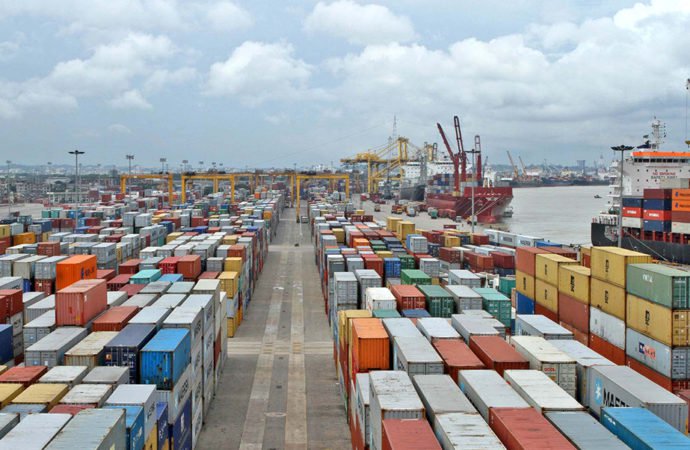Published in Dhaka Tribune on December 23, 2017

Photo: Dhaka Tribune
The total trade volume between the two neighbours stood at $7.5 billion in 2016-17
Coastal shipping between Bangladesh and India is growing rapidly.
The shipment of 1,000 tons of SAIL-TMT High corrosion-resistant (HCR) reinforcement bars last week for the Indo-Bangla Maitree Super Thermal Power plant from Kolkata Port was yet another big volume bilateral economic transaction.
This came shortly after the recent shipment of 185 Ashok Leyland trucks from Chennai to Mongla port in October this year.
Had the consignment been sent via road, it would have had to travel about 1,500 kilometres from South India to Bangladesh. The journey would have taken at least 15 days. But coastal shipping has cut the travel time.
Ashok Leyland will send thousands of truck chassis (out of 12,000 consignments) to Bangladesh in the coming days by the direct sea route linking Chennai with Mongla port.
The current pace of growth in coastal and inland water shipping, following a bilateral agreement finalised in 2015, has raised expectations among analysts about a huge increase in movement of goods between the two countries.
When road transport was the major option, the total movement of goods between India and Bangladesh was around 18,00,000 tons annually until 2013-14. Businessmen on both sides faced not only problems relating to volumes of consignments but also had to deal with limitations in the quality of materials handled.
“From the Indian side, fly ash and machine parts sent from Kolkata via Petrapole accounted for much of the exports,” an exporter recalled. From Bangladesh would come fruit products, dried fish, jute goods and garments.
Contrast this with the present: hundreds of tons of heavy power plant equipment were sent from West Bengal to Tripura via Bangladesh waterways for the Palatana Power station. Bangladesh gets a share from the power produced at Palatana.
Similarly, India is sending all sorts of goods to its northeastern states via river routes linking both countries. So far, eight routes have been identified for immediate use and more could be added in future bilateral agreements, official sources told the Bangla Tribune.
Bangladesh is reportedly interested in accessing the populous North Indian markets once Varanasi in Uttar Pradesh is linked by regular river transport with Kolkata and Haldia. This is a central government scheme that would involve some dredging operations in parts of the Ganges River.
At present, Bangladeshi exporters still use the land route to export their items to Delhi.
India remains the dominant partner in its bilateral trade with Bangladesh. In 2016-17, India’s exports to Bangladesh rose to $6.8 billion, a whopping 13% rise over the year before. The overall trade figure was $7.5 billion.
Dhaka has also registered a substantial growth in exporting RMG goods and textiles following several steps taken by India such as cutting tariff and extending the list of tax-exempt items from Bangladesh.
There are signs that some South Indian states are interested in importing items from Bangladesh. Business circles in Kakinada, in Telengana for instance, have recently demanded a direct link between Mongla, or another port in Bangladesh, with Kakinada port. They are keen to import, according to reports reaching Kolkata, jute items, textiles, fertilisers, and seafood products.
Analysts have pointed out that Bangladesh earns a sizeable transit fee from the movement of Indian goods through its waterways. In the transshipment of industrial equipment and rice for Tripura from Kolkata and Haldia, Bangladesh earned a fee of Rs192.25 per ton, with an additional fee of Rs50 per ton for ferrying the items from Ashuganj to Akhaura.
 CPD RMG Study Stitching a better future for Bangladesh
CPD RMG Study Stitching a better future for Bangladesh



